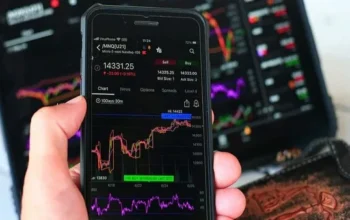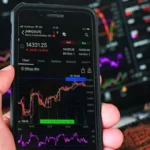In the dynamic world of forex trading, traders often deliberate between the rapid tempo of day trading and the measured approach of position trading. This decision is particularly nuanced in the Spanish forex market, which is shaped by local economic indicators and broader European Union policies. Grasping the intricacies of each strategy is essential for those aiming to thrive in this market.
Day trading in forex involves executing multiple trades within a single trading day, capitalizing on small price fluctuations and leveraging to boost potential gains. The main draw of this strategy is the potential for swift profits and the ability to sidestep the risks associated with overnight market changes. However, it demands continuous market surveillance and quick, decisive actions, which can be both stressful and demanding.
On the other hand, position trading entails holding positions over a more extended period, ranging from days to months or even years. This approach focuses less on short-term price shifts and more on identifying and riding long-term trends. In Spain’s forex market, position traders benefit from lower transaction costs due to less frequent trading. They also have more time to analyze and react to macroeconomic factors that affect the market.
Deciding between these two strategies depends on various factors, including market volatility, economic stability, and the trader’s time availability and risk appetite. Currently, the Spanish forex market presents strong cases for both approaches.
Spain’s economy has been recovering from past financial crises, but it still grapples with issues such as high unemployment and political uncertainty. These elements contribute to market volatility, which can present both risks and opportunities. For day traders, this volatility translates into numerous opportunities to profit from short-term price movements. They can quickly enter and exit positions, potentially benefiting from sharp currency value fluctuations.
Position traders, meanwhile, can leverage ongoing economic reforms and gradual stabilization to make informed decisions based on expected long-term improvements in Spain’s economy. By adopting a longer-term perspective, they can avoid the noise of daily market movements and concentrate on broader economic trends likely to influence future currency strength or weakness.
Technological advancements also influence the choice between day trading and position trading. Sophisticated trading platforms and analytical tools provide real-time data, enabling day traders to make rapid decisions. Conversely, position traders can use these technologies to conduct in-depth research and monitor long-term trends more effectively.
In the context of Spain’s forex market, choosing between day trading and position trading also depends on one’s understanding of the economic landscape and adaptability to sudden changes. Traders with a deep understanding of Spain’s economic policies and market dynamics might find position trading more advantageous, as they can predict larger economic shifts. In contrast, those who excel in rapid analysis and can dedicate significant time to market monitoring might find day trading more fitting.
Ultimately, there is no definitive answer as to whether day trading or position trading is superior in Spain’s forex market. Each strategy offers unique benefits and challenges, and the optimal approach varies based on individual goals, risk tolerance, and investment horizon. What matters most is that traders select a strategy that aligns with their personal trading style and remain flexible to adapt to ever-changing market conditions. Whether opting for the swift, frequent transactions of day trading or the strategic, long-term focus of position trading, success in forex trading hinges on understanding market dynamics and implementing a well-crafted plan.
In essence, both day trading and position trading can be profitable in Spain’s forex market, depending on how well traders can navigate market conditions and utilize their chosen strategy. Each trader must evaluate their circumstances and decide which method aligns best with their objectives and risk management preferences. This tailored approach will be crucial in achieving sustained success in the forex market.









